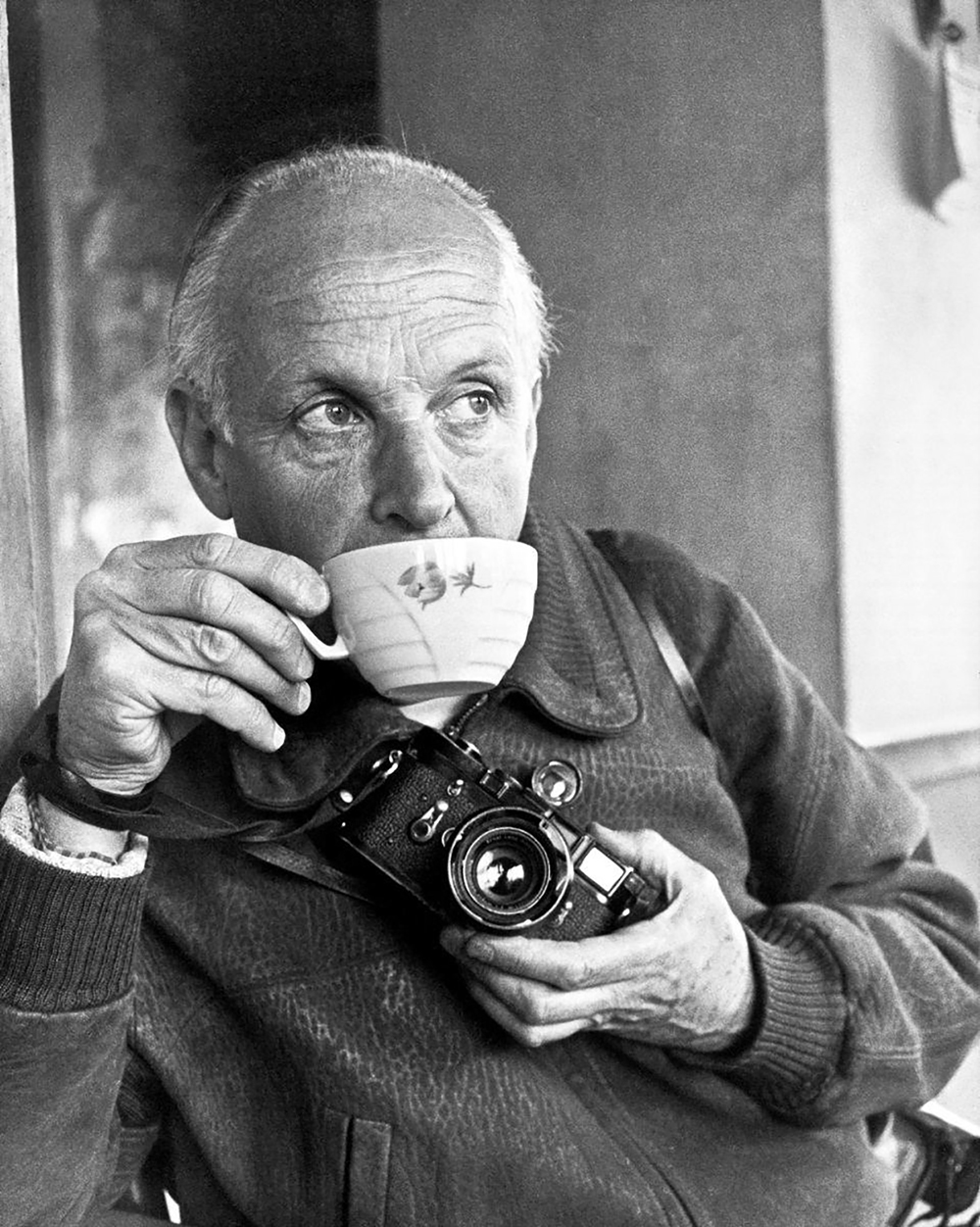(22 August 1908 – 3 August 2004)
Henri Cartier-Bresson was a French artist and humanist photographer considered a master of candid photography, and an early user of 35mm film. He pioneered the genre of street photography, and viewed photography as capturing a decisive moment.
Cartier-Bresson was one of the founding members of Magnum Photos in 1947. In the 1970s, he largely discontinued his photographic work, instead opting to paint.
Henri Cartier-Bresson was born in Chanteloup-en-Brie, Seine-et-Marne, France. His father was a wealthy textile manufacturer, whose Cartier-Bresson thread was a staple of French sewing kits. His mother’s family were cotton merchants and landowners from Normandy, where Henri spent part of his childhood. His mother was descended from Charlotte Corday.
The Cartier-Bresson family lived in a bourgeois neighborhood in Paris, Rue de Lisbonne, near Place de l’Europe and Parc Monceau. Since his parents were providing financial support, Henri pursued photography more freely than his contemporaries. Henri also sketched.
Young Henri took holiday snapshots with a Box Brownie; he later experimented with a 3×4 inch view camera. He was raised in traditional French bourgeois fashion, and was required to address his parents with formal vous rather than tu. His father assumed that his son would take up the family business, but Henri was strong-willed and also feared this prospect.
Cartier-Bresson attended École Fénelon, a Catholic school that prepared students for the Lycée Condorcet. A governess called “Miss Kitty” who came from across the Channel, instilled in him the love of – and competence in – the English language. The proctor caught him reading a book by Rimbaud or Mallarmé, and reprimanded him, “Let’s have no disorder in your studies!”. Cartier-Bresson said, “He used the informal ‘tu’, which usually meant you were about to get a good thrashing. But he went on, ‘You’re going to read in my office.’ Well, that wasn’t an offer he had to repeat.”
